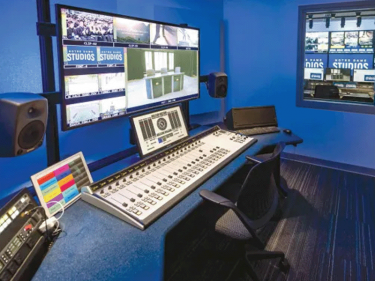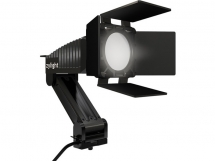| Українська | English | |||||||||||
|
|||||||||||
| News | About company | Service-centre | OB Van/SNG Rental | NextGen Energy Solutions | Contact us |
|
|
Engineering Service, Inc.
» News News The universe of AES67- compliant products has expanded over recent years and with the interoperability standard now published in the SMPTE 2110 standards suite has become the “Rosetta Stone” of audio-over-IP. But while digital mixing console system products were among the first to adopt AES67, to what extent are end-users networking compliant products? What barriers to adoption remain, and what can be done to promote more AES67 network implementations?
The universe of AES67- compliant products has expanded over recent years and with the interoperability standard now published in the SMPTE 2110 standards suite has become the “Rosetta Stone” of audio-over-IP. But while digital mixing console system products were among the first to adopt AES67, to what extent are end-users networking compliant products? What barriers to adoption remain, and what can be done to promote more AES67 network implementations? Calrec Audio has supplied AoIP networks to several broadcasters for facility-wide installations, reports Dave Letson, the company’s vice president of sales. “More often, though, we are seeing pockets of deployment in smaller applications, so the broadcaster or facility can cut their teeth and gain an understanding of SMPTE 2110 networks.” The real benefits and savings will come from greenfield builds that can implement the networking facilities from the get-go, Letson believes. Thus, some manufacturers have developed products, such as Calrec’s H2-IP Gateway devices, to bridge proprietary IP infrastructures and create hybrid networks. “Calrec’s AoIP I/O solutions allow any piece of third-party equipment that is AES67 compatible to talk to Calrec’s I/O boxes and enter the [company’s proprietary] Hydra2 domain”, says Letson. Manufacturers almost universally note that AES67’s lack of discovery, control and connection management, which were never part of the standard’s brief, are a barrier to adoption. Letson points to a recent survey that indicates that IP adoption is slower than previously forecast. Two-thirds of respondents stated a preference for a hybrid approach, with cost a major concern when considering a move to IP. “Cost is obviously a barrier unless you are already planning to replace equipment,” says Letson, including the costs to deploy completely new infrastructure and train staff, and costs incurred through disruption. Calrec is developing a stream manager, Calrec Connect, which will allow complex network information to be displayed and streams to be created in a user-friendly manner, according to Letson. “This helps to reduce the burden of training needed,” he said. He noted the importance of ongoing training in fostering adoption. “We encourage any customers interested in deploying an AES67 infrastructure to have open dialog with their consultants, integrators, and equipment providers to verify that all components specified are fully supporting the standard in an interoperable way.” « To the list of news |
|
|||||||||||||||||
 |
+38 (044) 593-18-20 +38 (073) 593-18-20 +38 (096) 532-96-82 +38 (095) 532-96-82 Service center Telegram @Engineer_Service |

|
|
|||||
 |
e-mail: engineer-service.tv 15 Vavylovykh str., Kiev, 04060, Ukraine Authorized service centre of Panasonic, Sony, JVC, Fujinon, Canon |
|||||||








